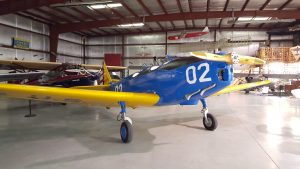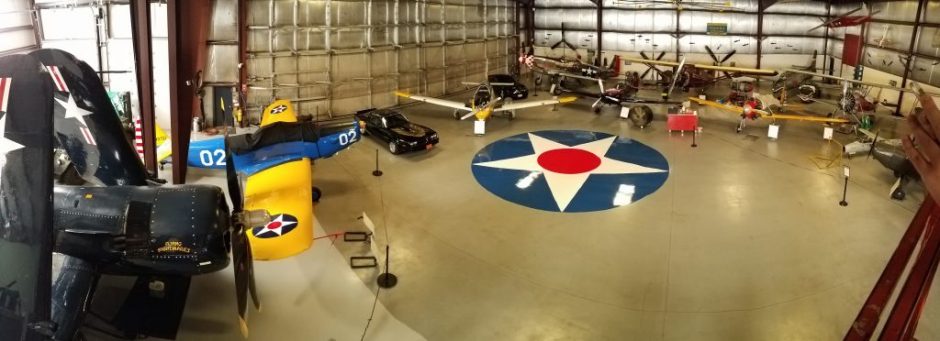


The PT-19 series was developed from the Fairchild M-62 when the USAAC first ordered the aircraft in 1940 as part of its expansion program. The cantilever low-wing monoplane with fixed landing gear and tail wheel design was based on a two-place, tandem-seat, open cockpit arrangement. The simple but rugged construction included a fabric-covered welded steel tube fuselage The remainder of the aircraft used plywood construction, with a plywood-sheathed center section, outer wing panels and tail. The use of an inline engine allowed for a narrow frontal area which was ideal for visibility while the widely set-apart fixed landing gear allowed for solid and stable ground handling.
The M-62 first flew in May 1939, and won a fly-off competition later that year against 17 other designs for the new Army training airplane. Fairchild was awarded its first Army PT contract for an initial order on 22 September 1939.
Production began in 1941 and 3,181 of the PT-19A model, powered by the 200 hp L-440-3, were made by Fairchild. An additional 477 were built by Aeronca and 44 by the St. Louis Aircraft Corporation. The PT-19B, of which 917 were built, was equipped for instrument flight training by attaching a collapsible hood to the front cockpit.
When a shortage of engines threatened production, the PT-23 model was introduced which was identical except for the 220 hp Continental R-670 radial powerplant. A total of 869 PT-23s were built as well as 256 of the PT-23A, which was the instrument flight-equipped version.
The final variant was the PT-26 which used the L-440-7 engine. The Canadian-built versions of these were designated the Cornell
Operational history Compared to the earlier biplane trainers, the Fairchild PT-19 provided a more advanced type of aircraft. Speeds were higher and wing loading more closely approximated that of combat aircraft, with flight characteristics demanding more precision and care. Its virtues were that it was inexpensive, simple to maintain and, most of all, virtually viceless. The PT-19 truly lived up to its nickname, the Cradle of Heroes. It was one of a handful of primary trainer designs that were the first stop on a cadet’s way to becoming a combat pilot.
Variants PT-19 Initial production variant powered by 175hp L-440-1, 270 built. PT-19 Powered by a 200hp L-440-3 3226 built. PT-19B Instrument training version of the PT-19A, 143 built XPT-23A A PT-19 re-engined with a 220hp R-670-5 radial engine. PT-23 Production radial-engined version, 774 built. PT-23A Instrument training version of the PT-23, 256 built. PT-26 PT-19A variant with enclosed cockpit for the Commonwealth Air Training Scheme, powered by a 200hp L-440-3, 670 built for the Royal Canadian Air Force as the Cornell I. PT-26A As PT-26 but with a 200hp L-440-7 engine, 807 built by Fleet as the Cornell II. PT-26B AS PT-26A with minor changes, 250 built as the Cornell III. Cornell I RCAF designation for the PT-26. Cornell II RCAF designation for the PT-26A. Cornell III RCAF designation for the PT-26B.
Operators: Argentina, Brazil, Canada, Chile, China, Columbia, Ecuador, Haiti, India, Mexico, Nicaragua, Norway, Paraguay, Peru, Philipines, South Africa, Southern Rhodesia, United Kingdom, United States, Uruguay, Venezuela
Survivors As of 2011, there were 98 airworthy aircraft worldwide.
Specifications PT-19A
General characteristics
- Crew: two (pilot, student)
- Length: 28 ft 0 in
- Wingspan: 36 ft 0 in
- Height: 10 ft 6 in
- Wing area: 200 sq ft
- Empty weight: 1,845 lb
- Gross weight: 2,545 lb
- Powerplant: Ranger L440-3 6-cyl. inverted air-cooled in-line piston engine, 200 hp
Performance
- Maximum speed: 132 mph
- Range: 400 miles
- Service ceiling: 15,300 ft
Sponsored by George Alarm Company Springfield, Illinois 217-525-1335
